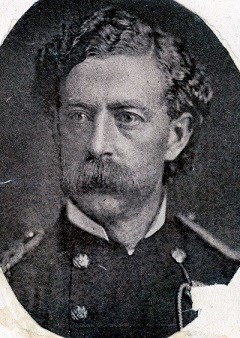
(NPS Photo) May 17th, 1868 
May 27th, 1868 The winter and early spring of 1868 was a time of relative quiet and peace on the Southern Great Plains. However, this was punctuated in May when a few isolated Indian raids occurred in central Kansas; one incident involved the stealing of food and provisions from settlers and in another the killing of two white men on Walnut Creek, Kansas. The incidents were attributed to Arapahos, Cheyennes or Osages. Another attack that month occurred at a small trading post near Fort Zarah, Kansas, in which an individual’s trading store was destroyed (which was later acknowledged as being caused by white men). In a letter dated May 27th, General Phillip Sheridan, newly minted commander of the Department of the Missouri, thought otherwise. He blamed the Cheyenne for two separate incidents in May of 1868. However, in a report of the Fort Zarah Raid, there was acknowledgment of the Cheyenne dissatisfaction over the unfulfilled promises of the Medicine Lodge Treaty, which included the promised delivery of food and weapons (that did not arrive). These tensions resulted in another incident in late May and early June 1868, as a large war party of 300 Cheyenne warriors prepared to attack the Kaw people (out of vengeance for a previous Kaw attack months before) on their reservation in eastern Kansas. The resulting skirmish did little to mediate their differences between the Kaw, but in fact created a ripple effect of events that would trigger the Washita event later in the year. One of the chiefs present during the raid, Little Robe, admitted to Indian Agent Edward Wynkoop that some of his warriors had killed the cattle of white settlers along the way. When news of the Cheyenne actions reached him, Superintendent of Indian Affairs Murphy banned the delivery of guns and ammunition to the Cheyennes, principally because of the “Cheyenne incursion into an area of white settlements.” The Cheyenne, in turn, refused to accept any goods delivered until they received the arms and ammunition (which they claimed vital for hunting) promised by the Medicine Lodge Treaty. The delay in their delivery would help trigger a raid on settlers in the summer of 1868 – which, in turn, would cause the conditions for the Washita attack in November of 1868. |
Last updated: June 18, 2018
